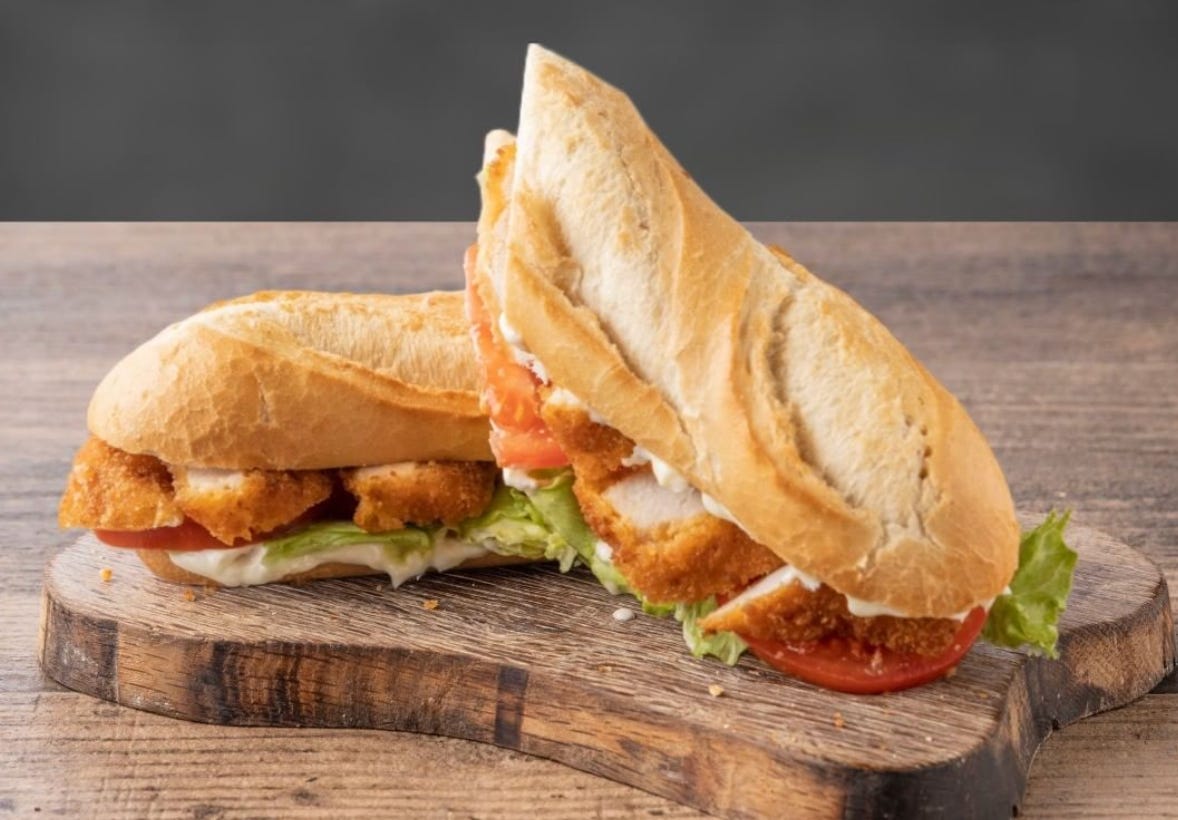Notable Sandwiches: St. Patrick's Day Special
A full day menu of Irish sandwiches
Welcome to the latest installment of Notable Sandwiches, the feature where I, alongside my stalwart editor David Swanson, nibble my way through Wikipedia’s List of Notable Sandwiches in alphabetical order. This week: a detour, as we celebrate St. Patrick’s day with menu of notable Irish sandwiches. Sláinte. Enjoy the green beer and avoid Yonkers after 4pm!
Breakfast
The Irish Breakfast Roll
“This sandwich is such an integral part of the Irish national consciousness that it became the subject of a No. 1 hit song. “Jumbo Breakfast Roll” by Pat Shortt, which spent six weeks at the top of the Irish charts in 2006, despite (or perhaps because of) the fact that the chorus is simply a literal description of the sandwich’s contents:
Two eggs two rasher two sausage two/Bacon Two puddins one Black and white/All placed like a tower on top of each/other and then rolled up good and tight.” Comprised of a buttered baguette stuffed with the wild concatenation of fried pork products and dubious vegetal accompaniments that constitutes a “full Irish,” the breakfast roll is both delicious and a symbol of plenty in a land that’s known both war and hunger.
“To judge by the various tales scattered across the internet, the origin of the Chicken Fillet Roll is a myth as shrouded in mystery as St. Patrick and the snakes.
What is it about this sandwich that inspires t-shirts, memes, and poetic odes on Youtube? How did this particular comestible—a breaded, processed-chicken filet (as we spell it here in America), sliced up, stuffed into a baguette, adorned with various relishes—become a staple of Ireland, an island whose cuisine is best known for Guiness and potatoes?”
Supper
Corned Beef
“With or without cabbage, corned beef is among the foods most indelibly associated with the Irish—but it’s a complicated love affair. The Irish connection to corned beef goes back millennia. In ancient times, Greek and Roman accounts tell of the Celtic affinity of salted meat, and the eleventh century Irish text Aislinge Meic Con Glinne (The Vision of Mac Conglinne), tells of “perpetual joints of corned beef” fit for a king.
Although corned beef appeared on aristocratic menus, it was never peasant food. In fact, though it became one of Ireland’s biggest exports, corned beef was never fundamental to the local population, whose diet leaned more towards pork, and later, the potato. Nevertheless, the beef from cattle raised on English-owned Irish estates, and then cured and packaged in Cork City, would go on to feed the British Navy in its pursuit of global empire.”










I was born and raised in (Northern) Ireland and love all this stuff -- but my partner cannot stand cabbage in any form, won't go near black pudding (or any offal products), and doesn't like corned beef so there's not much chance of St Patrick's Day celebration in our house, food-wise.